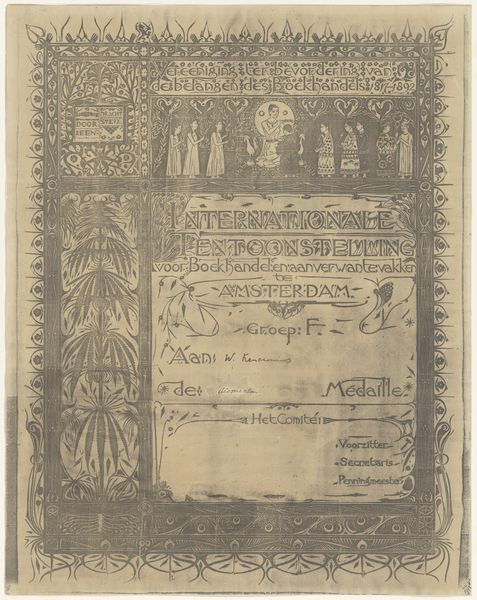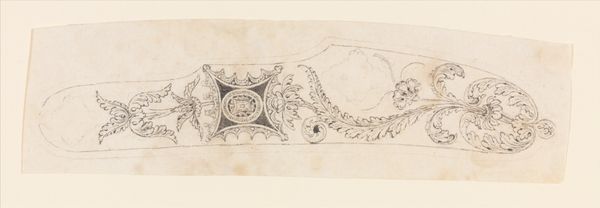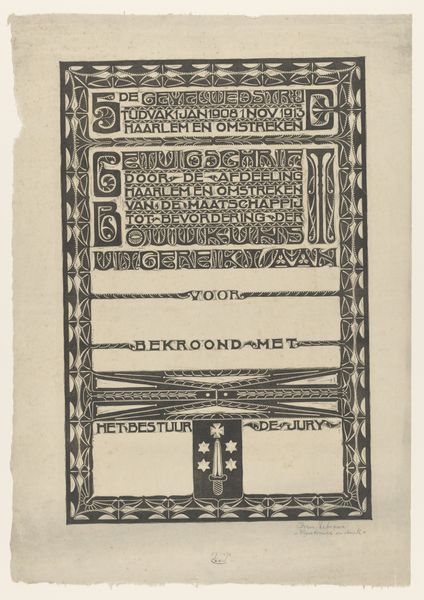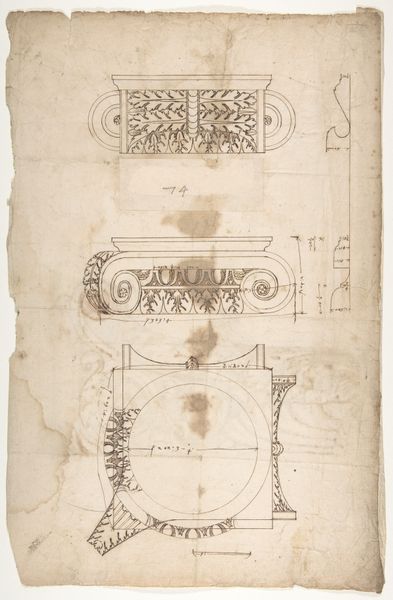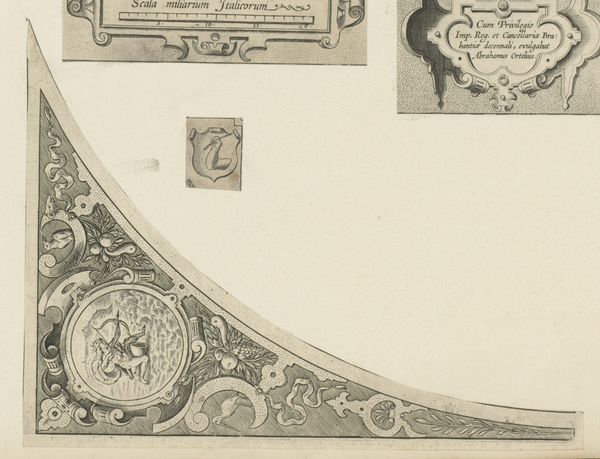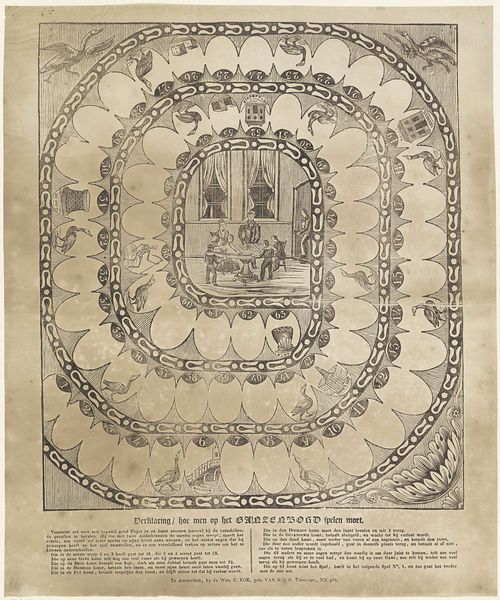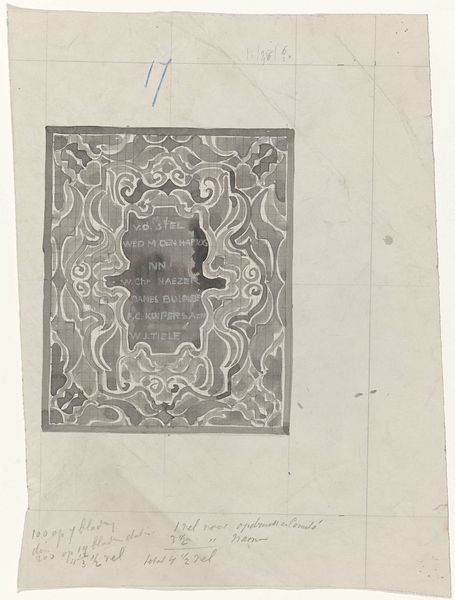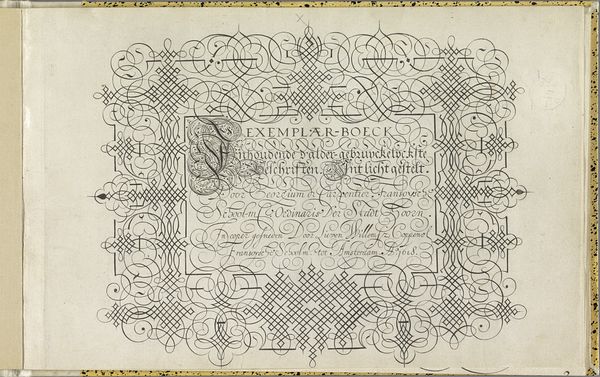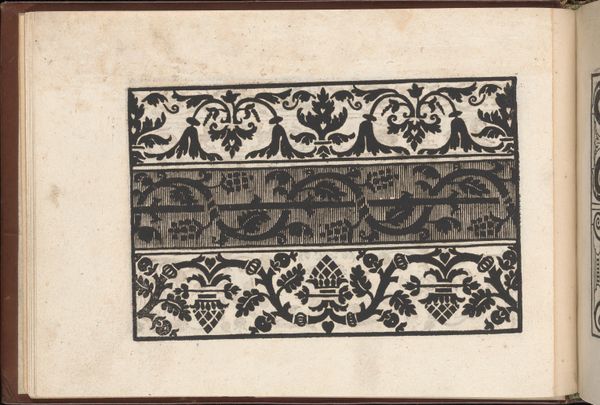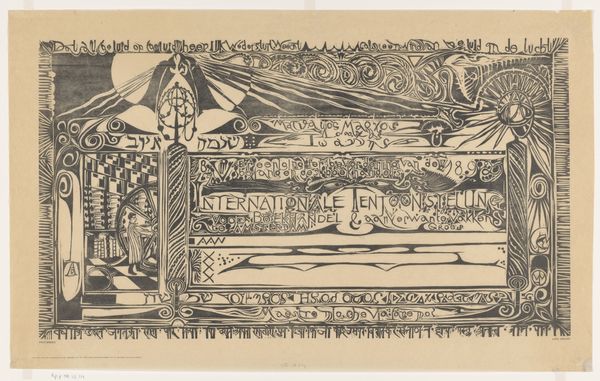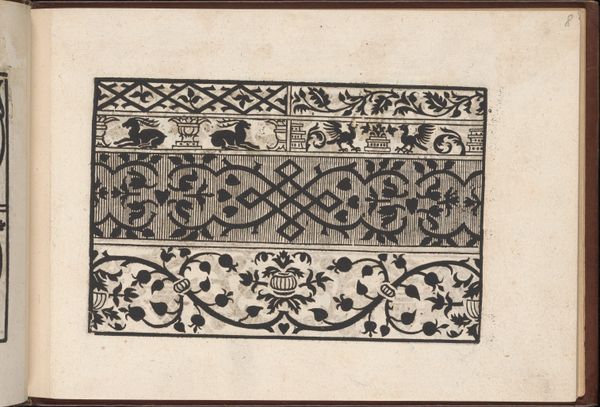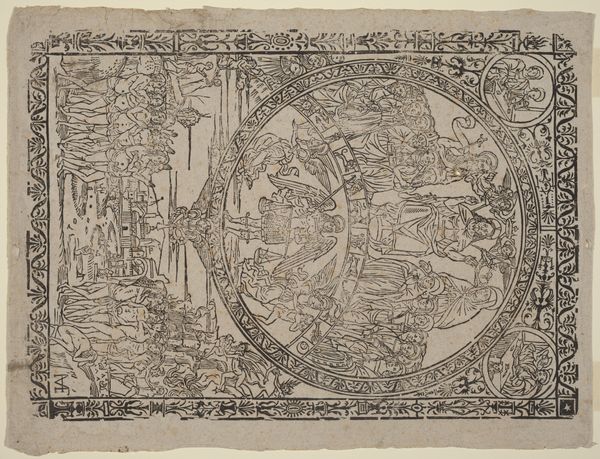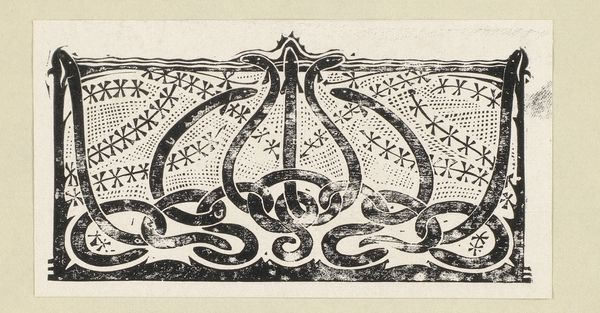
Ontwerp voor de boekomslag van de ingenaaide editie van 'Kunst en samenleving' 1893
0:00
0:00
drawing, graphic-art, paper, ink, pen, poster
#
drawing
#
graphic-art
#
aged paper
#
toned paper
#
art-nouveau
#
old engraving style
#
paper
#
personal sketchbook
#
ink
#
pen-ink sketch
#
ink colored
#
pen and pencil
#
pen work
#
sketchbook drawing
#
pen
#
decorative-art
#
poster
#
sketchbook art
Dimensions: height 320 mm, width 390 mm
Copyright: Rijks Museum: Open Domain
Curator: Here we have Gerrit Willem Dijsselhof’s 1893 design for the book cover of ‘Kunst en Samenleving,’ or ‘Art and Society,’ now housed at the Rijksmuseum. It's an exquisite example of Dutch Art Nouveau. Editor: My first impression is that it feels intensely stylized. The symmetrical arrangement, the organic, flowing lines, and the muted tones create an overall mood of refined elegance. Curator: Dijsselhof was deeply influenced by the socio-political context of his time. Art Nouveau, emerging amidst industrialization and societal change, served as a response—an embrace of nature and craftsmanship as an alternative to mass production and its alienation. This book, concerning art and society, points to that moment's critical questions about art’s role in public life. Editor: Precisely. Let's consider those repeating floral motifs. Notice how they're not merely decorative. Their rhythmic placement structures the whole design. The typography too, meticulously integrated, serves not just to inform but to contribute to the visual harmony. It’s form dictating function, wouldn't you agree? Curator: I see it slightly differently. These patterns weren't just about aesthetics. The rise of socialism and anarchism at the time encouraged artists like Dijsselhof to consider how their art could speak to the masses, not just the elite. Decorative arts became a potent vehicle for social commentary and aspirations. Editor: Indeed, the duality within the form mirrors a desire for both an ordered aesthetic experience and the suggestion of deeper meanings, something beyond the purely visual. Note also how he's handled the ink on paper—the tonality creates a sense of depth despite being a primarily linear work. Curator: Absolutely, and the artists featured--Walter Crane and Jan Veth--were themselves politically active. Crane's socialist leanings and Veth's writings on art as a moral force underscore how aesthetics were tightly intertwined with ethics and political reform. The piece becomes a meeting point of individual expression and collective aspirations. Editor: It is amazing how Dijsselhof manipulates a simple medium into something quite potent! The delicate details of the ink work against the background—it’s a conversation between line and space, lightness and shadow. This work resonates with clarity through these constructed oppositions. Curator: Understanding the historical and theoretical underpinnings definitely gives me a broader appreciation for Dijsselhof’s intentions. Editor: And for me, observing how skillfully those intentions have been achieved by exploiting formal qualities, reinforces how thoughtful the artist's production really was.
Comments
No comments
Be the first to comment and join the conversation on the ultimate creative platform.
